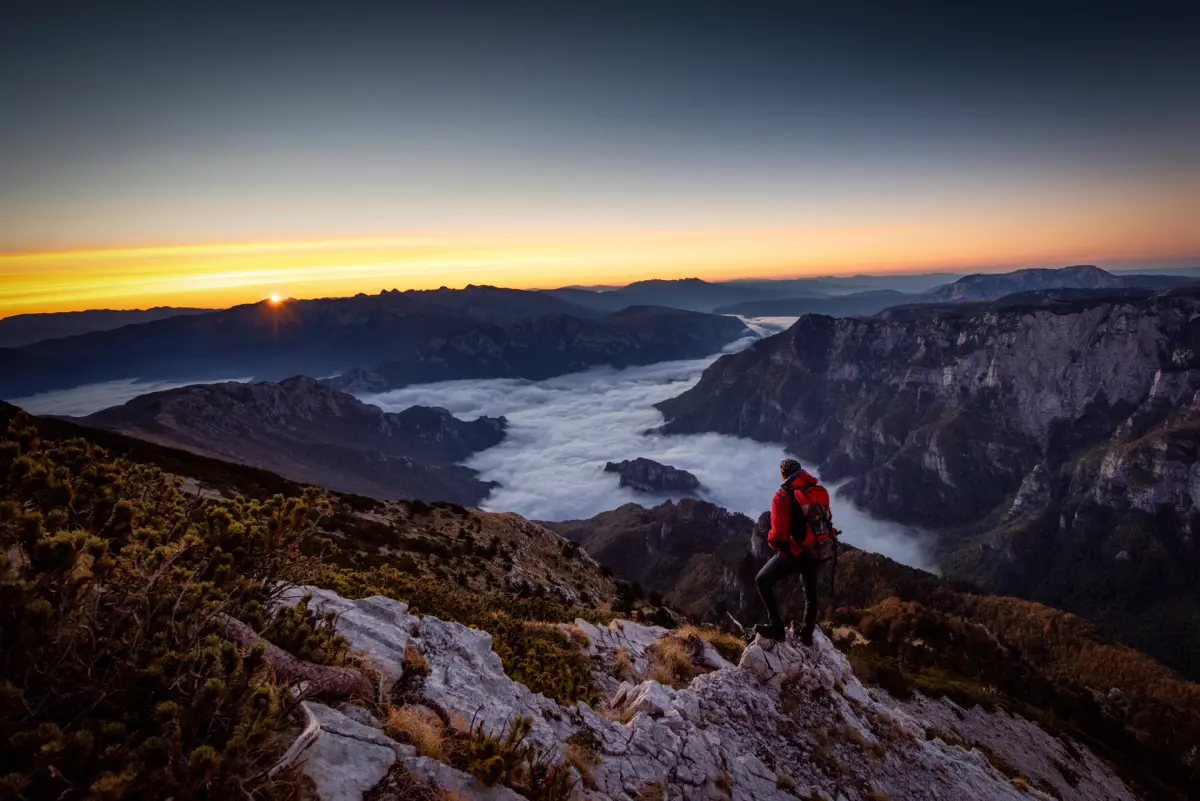Relaxed, I cruise along the Danube, the second longest river in Europe, which connects the most diverse cultures and tells a rich story. Today, most of its natural branches have disappeared and the river has become a regulated waterway and economic artery. As a result, only in a few places does the Danube still form a refuge for flora and fauna. However, there is one region in Europe that is considered the home of the last living rivers. It is the Balkans, and there especially the young country of Bosnia-Herzegovina, where nature is still largely intact. Here, nature lovers will find rivers with clear, light blue to emerald green shimmering water, lined by forested, often steep mountain slopes.
Relaxed electric travel
I planned my travel route from Augsburg to Sarajevo with a stopover in Vienna. Despite all the prejudices about the lack of suitability for travelling, I decided to cover the distance of 1200 kilometres in an electric car, the IONIQ 5 from Hyundai. This much in advance: The long distance was mastered without any problems and without long delays, and the notorious range anxiety never arose. The reasons for this are, on the one hand, the range of my "Stromer", which is about 400 kilometres in real-life operation. However, the quick-charging capability of a purely electric vehicle is more decisive for its suitability for travelling.
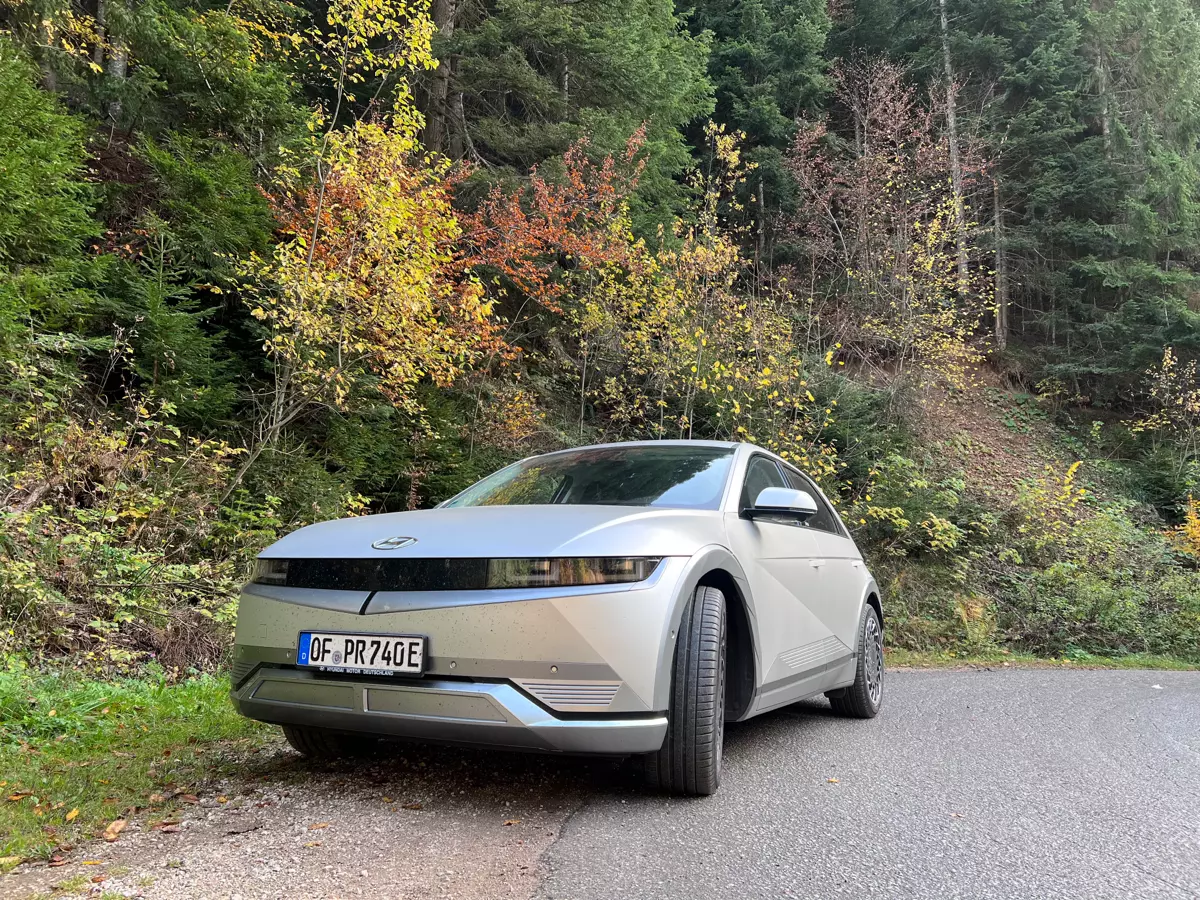
Here, my comfortable, spacious vehicle, which was provided to us by the manufacturer for testing purposes, comes up with a special feature. Like only a few e-models, mostly in the six-figure price segment, the IONIQ 5 has a voltage of 800 volts, which puts it in a position to eat up about 300 range in just 20 minutes at a fast charger.
Another essential factor for coping with longer distances without stress is the presence of a sufficient number of ultra-fast chargers, the "hyperchargers", along the route. A lot has happened here recently. In addition, the service offered by EnBW Energie Baden-Württemberg already enables charging at more than 500,000 charging points in 17 European countries. To get an impression not only of the vehicle but also of the charging options, I headed straight for the EnBW fast-charging park in Unterhaching near Munich at the beginning of my e-trip.
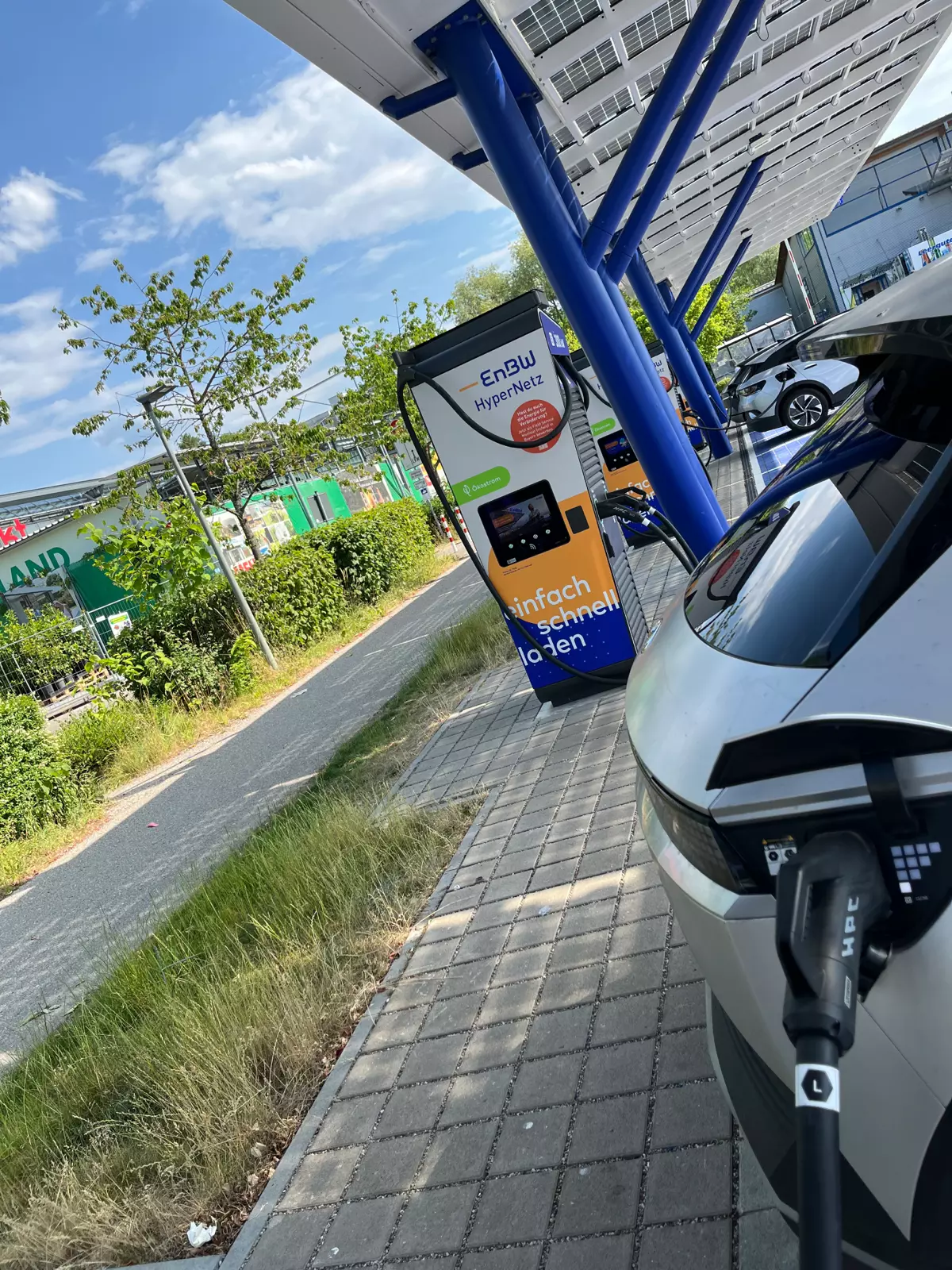
E-mobilists have 20 charging points at their disposal, which guarantees that they won't have to wait for a connection to become available. And so my short charging stop became a relaxed affair, also because the EnBW charging card worked just as flawlessly as it did during the rest of my journey. This is what modern e-mobility should look like in practice: Fast charging from green electricity under a solar roof that protects against sun and rain.
Meeting place for the e-drivers: The Hotel Kaiserhof
If you are heading towards Vienna by e-car from the west, you usually can't avoid a charging and enjoyment break at the sustainable Hotel Kaiserhof in Anif near Salzburg. And so I didn't want to miss the opportunity to take a look at this extraordinary attraction for e-mobilists from all over Europe with its over 40 charging points and Styrian-influenced cuisine. Even from a distance, a classic display with prices greets us here, as we know them from petrol stations.
However, these are not fuel prices, but electricity prices. The owners, the Absenger couple, are completely committed to e-mobility and not only offer their guests charging facilities, but also rent out electric cars from various manufacturers and even electrically powered motorbikes to those interested in e-mobility.
Consistently sustainable: The Boutiquehotel Stadthalle
Finally Arriving in Vienna, I stay at one of the most sustainable hotels in the country, the boutique hotel Stadthalle in the heart of the city. This destination was the first Sustainable Development Goals hotel in the world with a zero energy balance. And yes, almost everything there is indeed geared towards sustainability! Even the furnishings are made of recycled materials, testifying to the extraordinary creativity of the owners. For example, books are transformed into sideboards, an old ladder serves as a coat rack, and old teapots from grandmother's coffee party days now function as lamps.
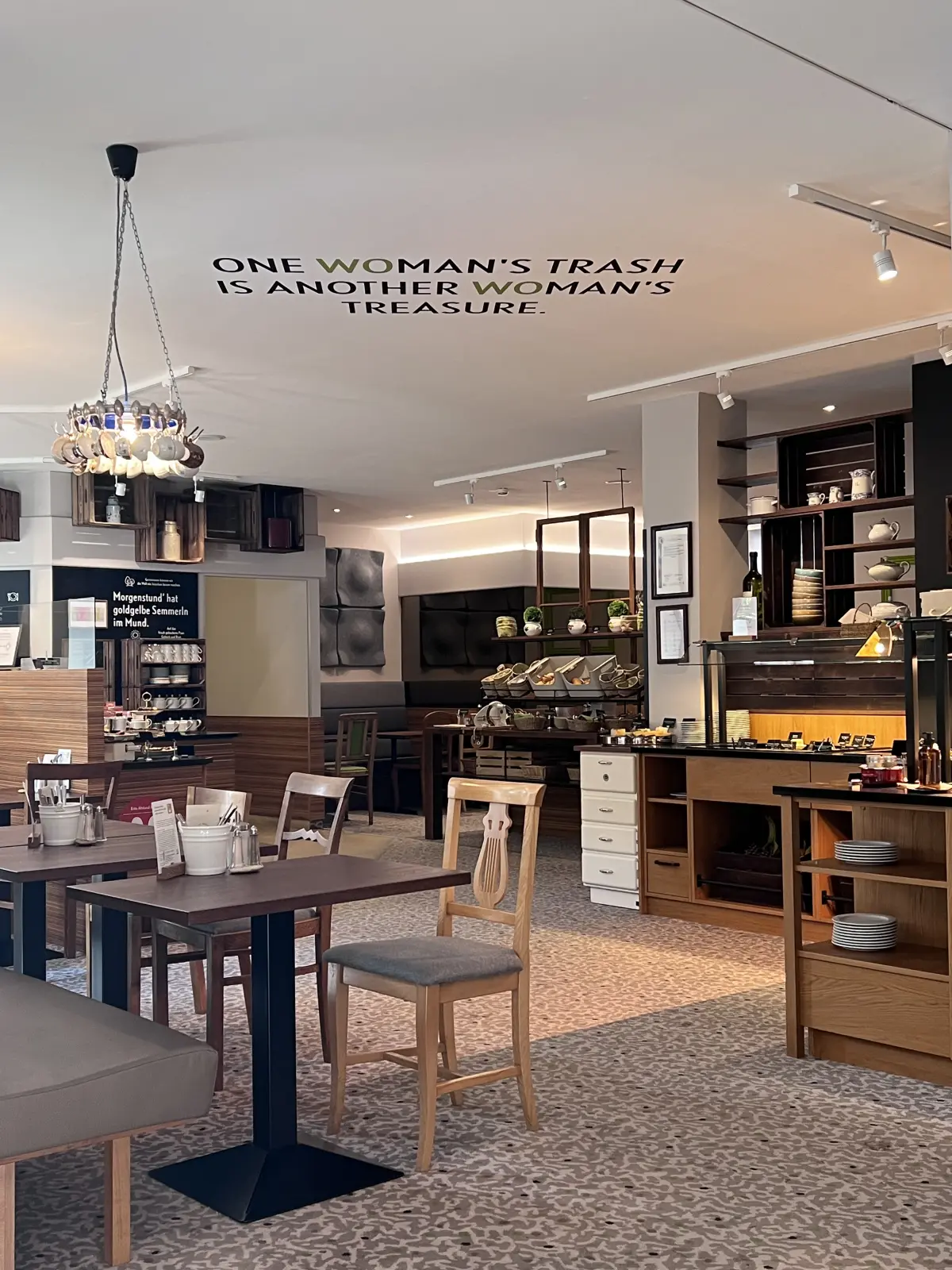
There is something to discover in every detail, here circular economy and recycling shake hands. At breakfast in a room that seems to have been inspired by the fairy tale Alice in Wonderland, organic ingredients are of course on the table. After two inspiring days of culture in Vienna, the tour continues towards Sarajevo, the capital of Bosnia-Herzegovina.
The Balkans call
Immediately after the border with Croatia, the difference in nature is noticeable. The forests are denser and lush green shimmers in the sun. Also noticeable: the windscreen of my car is adorned with more insect corpses than before. On the one hand, this is regrettable, but on the other hand it is gratifying, because here the population of insects is obviously still as high as it once was in German-speaking regions. Before habitats were taken away from them and more and more agricultural land was intensively cultivated.
My range is now well over 400 kilometres after charging to 80 per cent, thanks to the country roads on the route, which make you drive at a more leisurely pace compared to the few stretches of motorway. In addition, energy consumption is reduced by regenerative braking when driving downhill.
There are many rough gravel roads here that lead through wild nature but were easy to master thanks to four-wheel drive. Sometimes you drive up to 20 kilometres through forests or in canyons along a river without encountering a human or even a car.
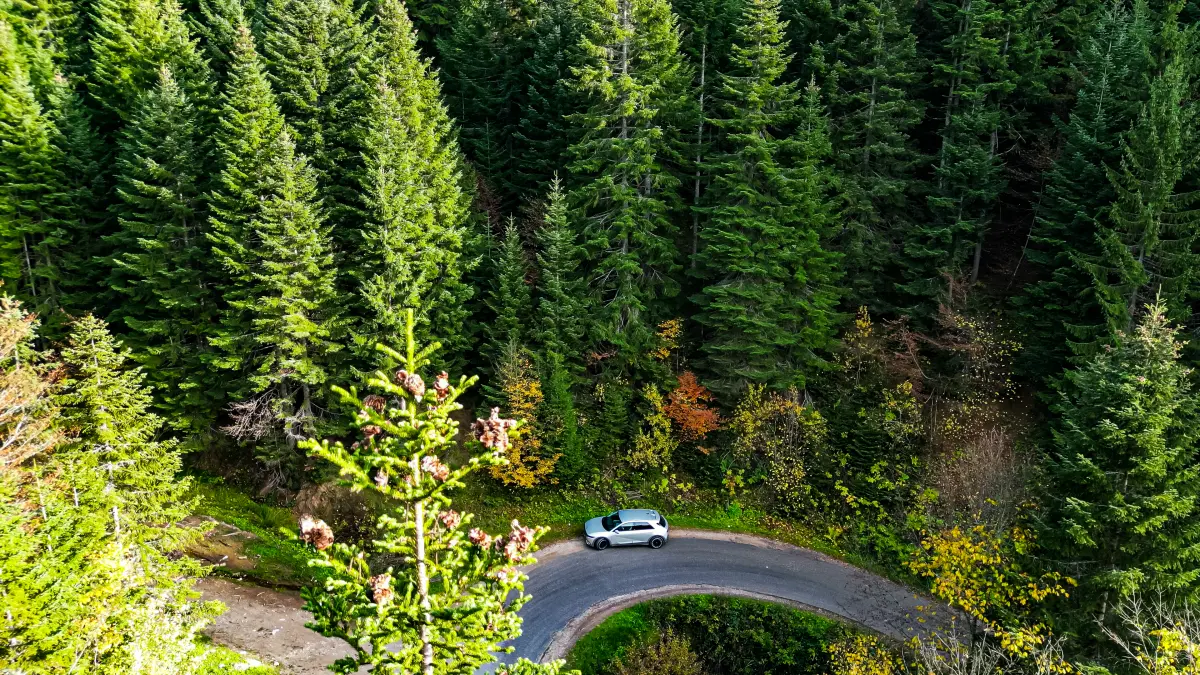
Hiking in wild mountain regions
In the mountains I meet Dzevad Dzino and Zehrudin Isakovic, probably the most famous alpinists in the country. I went hiking with Zehrudin once. It would be an "easy" tour, they said. Well, for someone who had climbed Mount Everest, certainly, but for me it felt like a vestibule of hell ... The tour went up Mount Prenj, the Himalayas of the Balkans. The view was fantastic, but I quickly felt that nature reigned supreme and not man. I was also not used to the fact that there are no classic hiking trails like in Germany, Austria or Switzerland, for example; in Bosnia-Herzegovina you simply walk through beautiful landscapes. It is therefore not advisable to hike alone, the risk of getting lost is too great. And then there are the bears and other forest dwellers. Man is still the guest here. And that is a good thing!
Zehrudin and Dzevad often go on tours together. While Zehrudin, a journalist by profession, has written several hiking books and published a video series about the mountains of the Balkans, Dzino is a passionate photographer. His pictures have been published all over the world, and hardly any other artist is able to capture the beauty of the country like he does. He was born in Jablanica, a small town below what he considers the two most beautiful mountains in the country, the infamous Prenj and Čvrsnica. Wild beauties on which hikers can feel the pristine peace in their souls. With its eleven peaks over 2000 metres above sea level, each unique and demanding in its own right, the Prenj stands out from the rest. Zehrudin has dedicated a book to this majestic mountain alone, which taught me humility within a few hours.
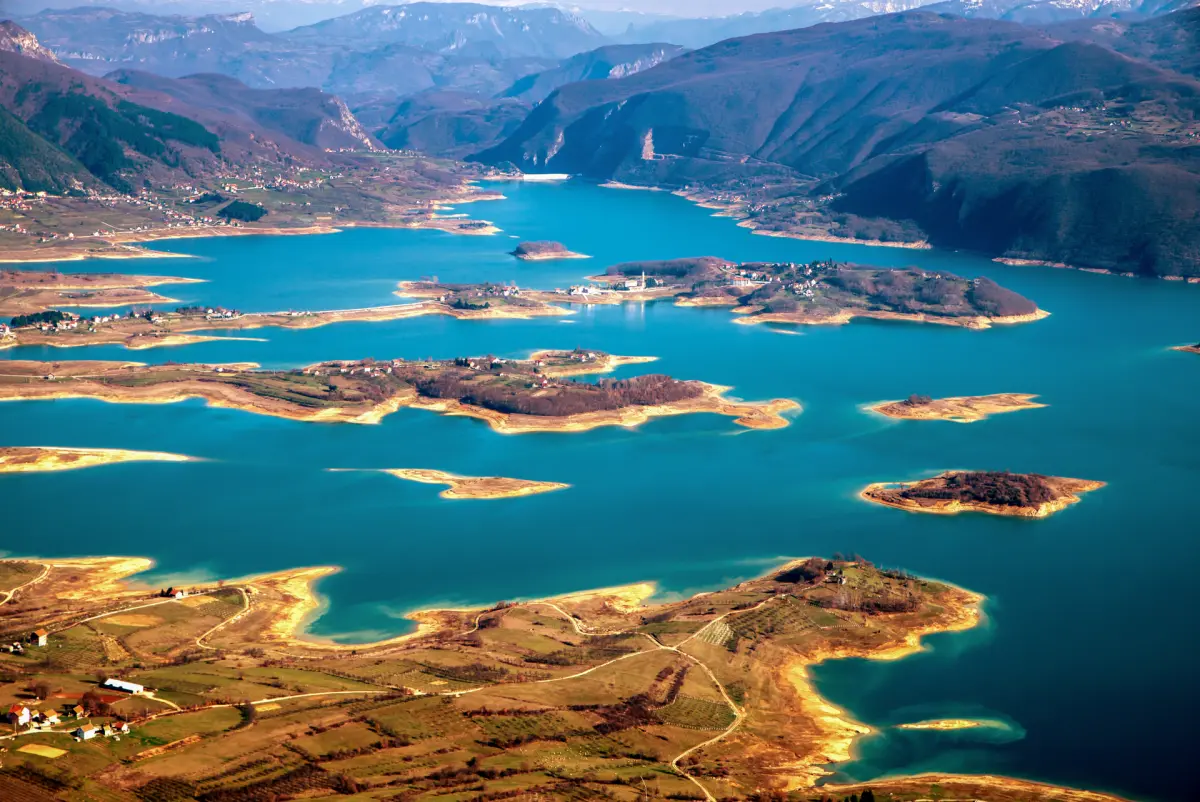
Bosnia and Herzegovina seems to consist of mountains alone. The range of the Dinarides mountain massif, which stretches across the entire country, is nothing short of magical. Here you can feel the real, true sense of hiking in the wilderness and be rewarded with views of fantastic peaks, beautiful valleys and pristine lakes. But climate change is also being felt here. The vegetation has become much more vigorous and lush in recent years. Small pines and junipers dominate the valleys. "I fear that we will lose some of the unique meadows and valleys on the most beautiful mountains," Dzevad tells me worriedly. "I would like to see every mountain declared a national park, which would include a ban on massive logging and intensive hunting." This is the only way to preserve the abundance of unique natural jewels for future generations.
Committed species conservationists
Kaled Idrizovic from Sarajevo spends every free minute on Bjelasnica Mountain. The passionate falconer is building a falconry here as part of a private initiative. It will later serve as an environmental education centre for school classes and other guests. When I visit him, he is holding one of the native grey falcons in his arms. You can feel the symbiosis between the two. Kaled has nursed the badly injured hunter of the air back to health. Many species of birds of prey are threatened with extinction here, too, and some of them are on the Red List of endangered species. Thanks in part to Kaled's commitment, their population is rising again: "Basically, we are not an association involved in rescuing birds of prey, but people often turn to us when they find injured birds, which we take in and release back into the wild after they have recovered."
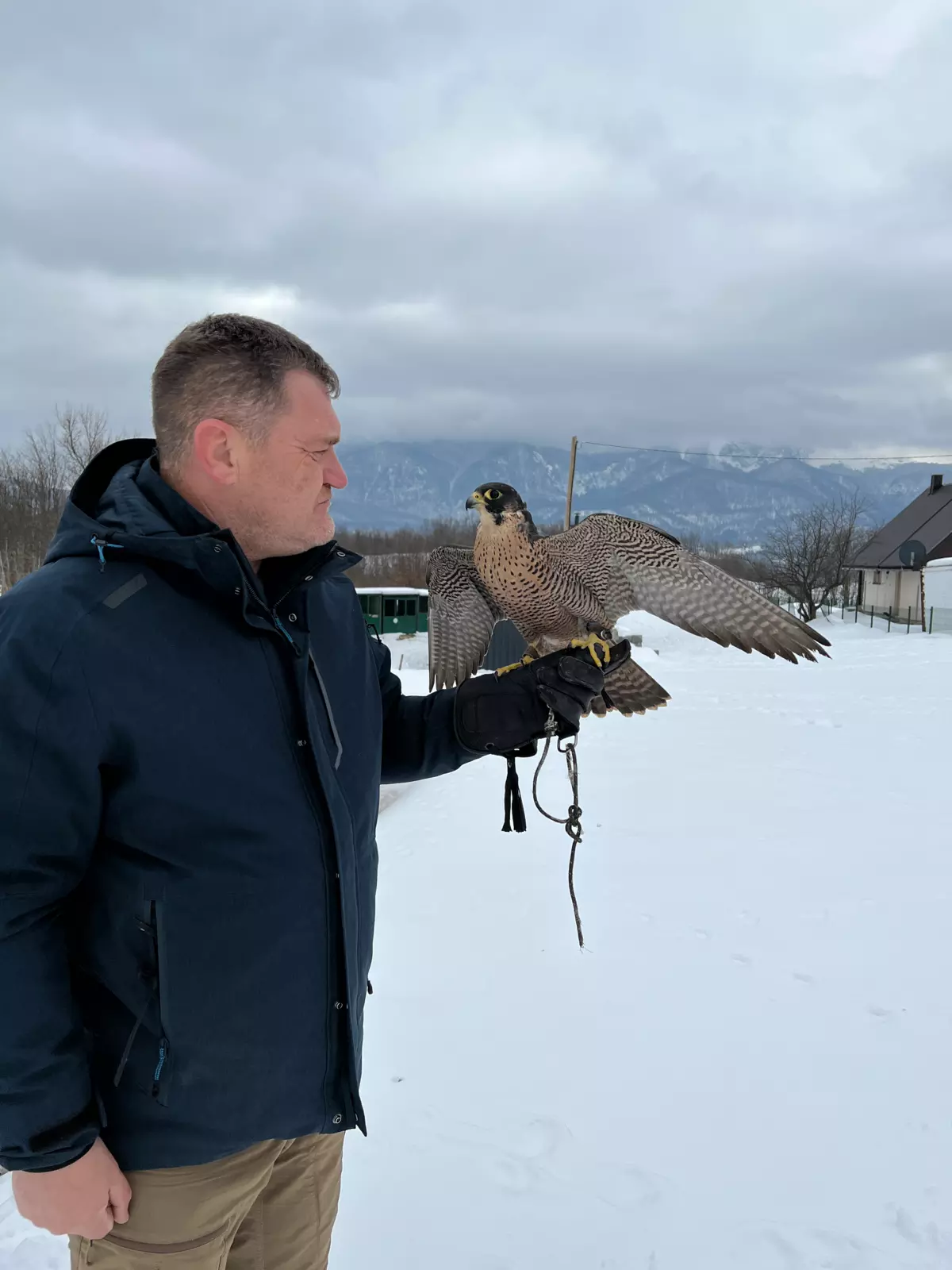
The hawk looks at me curiously, I keep a respectful distance from him. Kaled laughs: "Just come closer, he won't hurt you!" We take photos together. I look into the eyes of the falcon. I am fascinated by its beauty and power. Hunting with falcons goes back to the medieval kingdom of Bosnia. Even then, travellers described hunting with falcons in the country, which was unique in its traditional way in this area.
I drive on to the Romanija mountains, about 20 kilometres from Sarajevo. "Here you will meet wild horses", my cousin Faruk explains to me. And indeed! As the sun sets, they appear in the pasture to graze. They are small, strong and their fur is thick. They are not shy, but they keep a respectful distance.
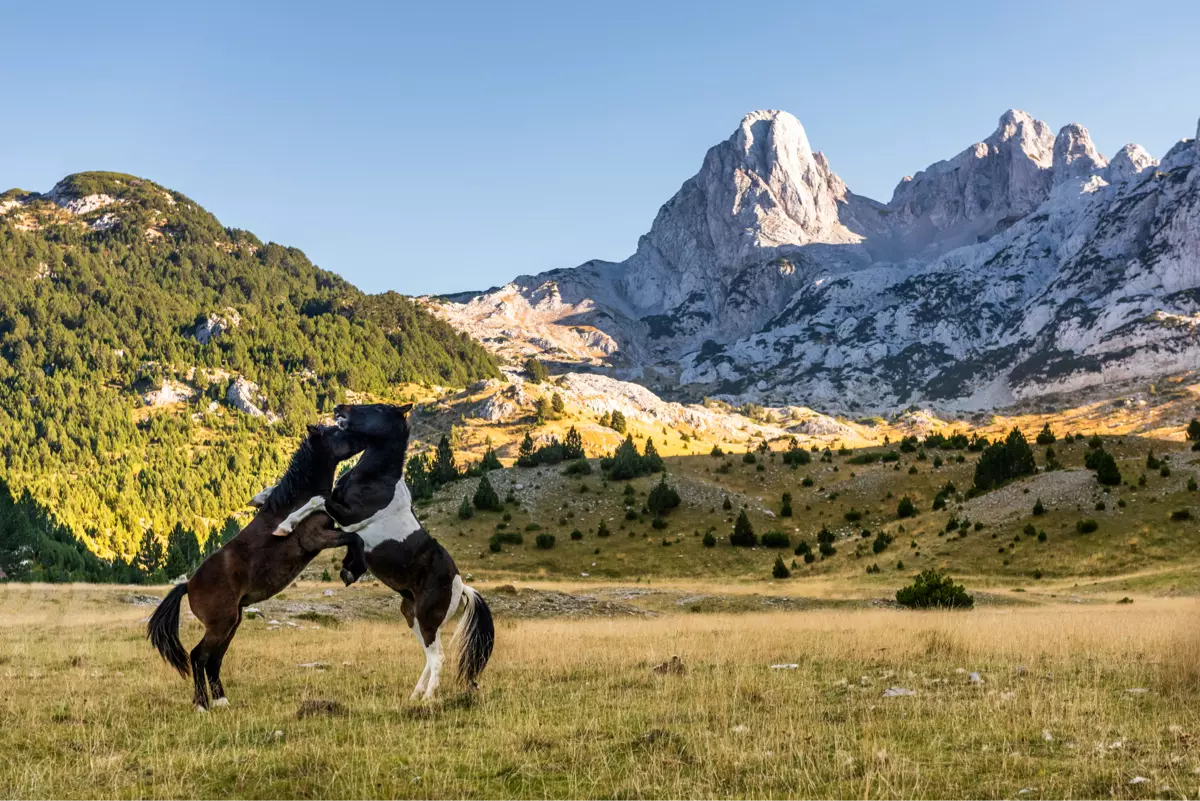
The origin of the Bosnian mountain horses is assumed to be the extinct West Eurasian wild horse Tarpan and the Przewalski breed of horses originating from the Mongolian steppes. Today, the remaining stocks are threatened with extinction. A ranch on Mount Vlasic in central Bosnia provides them with protection and thus restocks the population. Azra Bekic from Vienna founded this Ark Stud together with her husband, one of which is also located in Austria.
Geological mystery
In the Middle Ages, the kingdom was one of the most influential in Europe. Even today, the numerous medieval castles scattered throughout the country bear witness to this. On the way to Bobovac, where the Bosnian kingdom was founded in 1377, I visit a place with a mysterious geological phenomenon that can only be found in New Zealand or the Arctic: Stone spheres have been excavated in the midst of nature. About 60 of them are of smaller diameter, but the largest one weighs over 30 tons and is located on a private property. "I found them by chance when I was chopping wood," Suad Keserovic, the owner of the property, tells me. "A tree fell down and this smooth curved surface came to light underneath it. I was curious and kept digging. What came to light was this giant sphere." Some see it as a mystery shaped by the hand of a master, like those in Costa Rica. Geologists, however, assume that it was formed by concretion, a gradual deposition of material. Be that as it may - it and also the smaller specimens are special treasures and worth a visit.
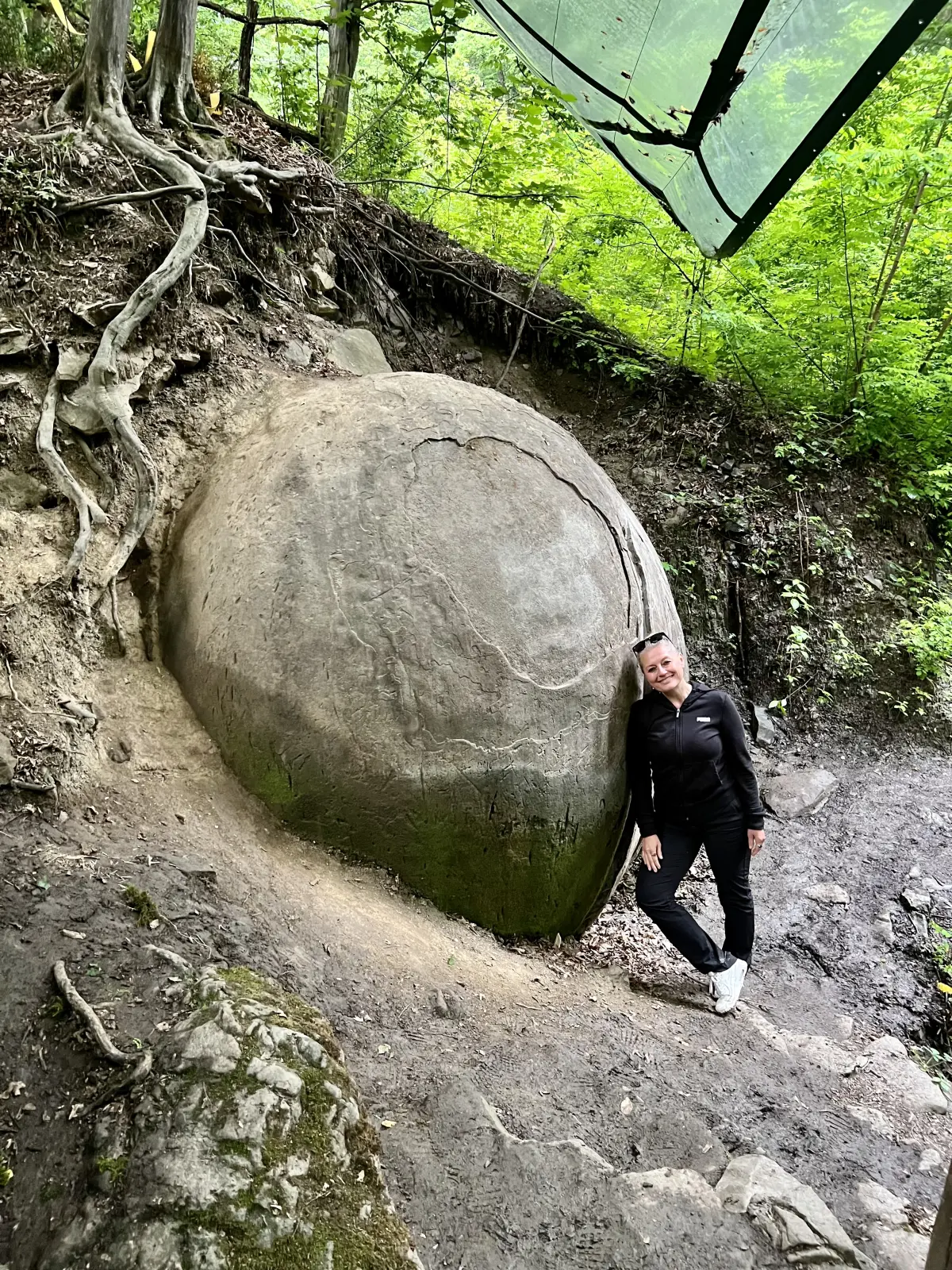
Suad has built a place of encounter and tranquillity near the sphere. A wooden hut in the middle of a true fairytale forest, framed by rocks covered with moss and ferns. Suad prepares another surprise for me - at the cooker. The nature boy is a passionate cook, vegan and vegetarian dishes are also part of his cooking skills. "I have no idea who or what created this sphere. What matters to me is that this is a place of tranquillity where my guests can connect with Mother Nature." Suad brings me a plate of home-collected mushrooms in a cream sauce. Of course, the full-fat sour cream comes from a farmer's wife, and everything is organic. "Our land offers us everything we need to live," Suad explains to me. He lived in Venice for a long time, but today he wouldn't leave his natural paradise again for any money in the world.
The natural pearl in south-eastern Europe
Four national parks invite guests to marvel. Each of them is unique and different in its nature.
Sutjeska in the south-east of the country, on the Montenegrin border, is the oldest. With Mount Maglic and its 2386 metres in height, it is one of the highest in the country. The primeval forest Perucica can also be found here. The trees are up to 300 years old and are so dense in some places that there is no penetration for us humans.
Kozara in the northwest of the country is situated between four rivers. The popular area is a perfect place for hiking, walking or just hanging out. One of the four rivers is the Una. It got its name from the Romans - translated it means "the unique one". And that is indeed what it is. This national park right on the Croatian border is not to be missed! The wide river is crowned by several stepped waterfalls, the Strbacki Buk. The water is so pure that it shimmers light blue to emerald green.
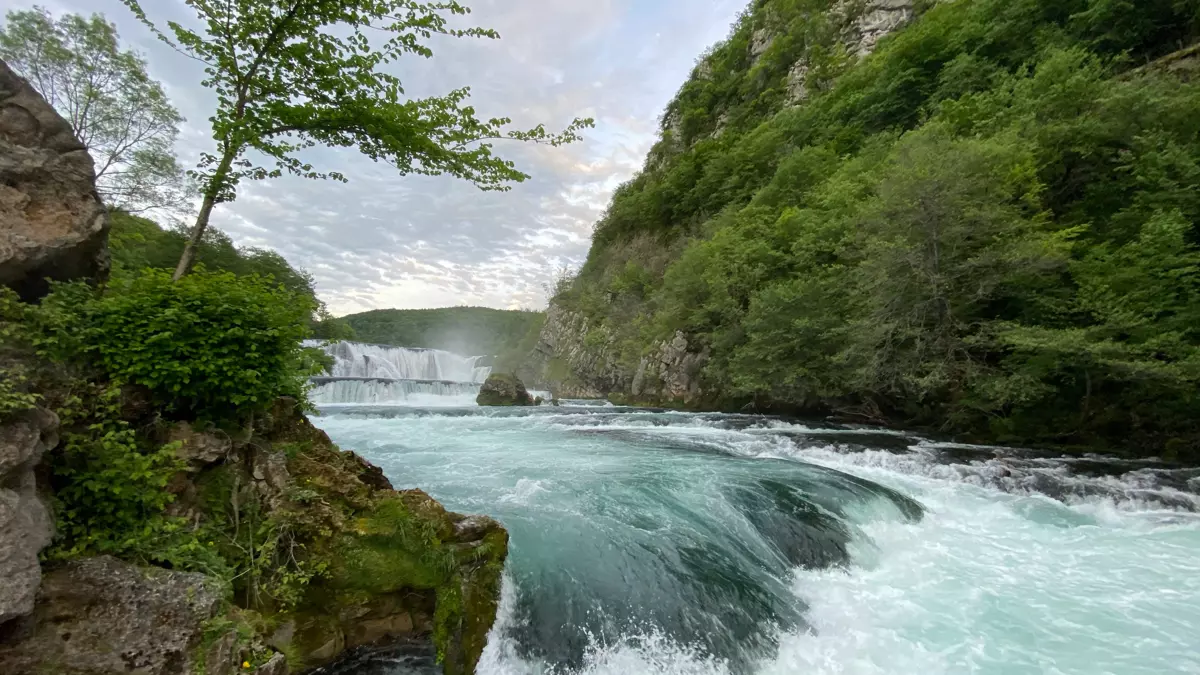
And then there is the Drina National Park, dedicated to another river, but located in the southeast on the Serbian border. In ancient times, at the time of the Romans, it represented the natural border between the Western and Eastern Roman empires. Its headwaters are also among the most beautiful in the country.
Bosnia and Herzegovina is one of the smallest countries in Europe with 51,000 km2, but richly blessed with history, culture, flora and fauna. Treasures that want to be rediscovered and preserved. Nature is intoxicatingly beautiful, but also rough and untamed. The country seems to me to be the place where man feels closer to Mother Earth and the universe than anywhere else.
Text: Mirella Sidro
Images:
Lead story: Dženad Džino Photography
Image 1 Hyundai IONIQ 5: Mirella Sidro
Image 2 and 3 Charging situations: Mirella Sidro
Image 4 Boutiquehotel inside: Mirella Sidro
Image 5 Forest from above: Faruk Osmanovic
Image 6 Mountain river: Dženad Džino Photography
Image 7 Falconer: Mirella Sidro
Image 8 Horses: Dženad Džino Photography
Image 9 Stone ball: Mirella Sidro
Image 10 River: Mirella Sidro


